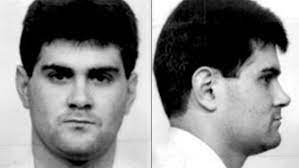Cameron Todd Willingham: Wrongfully Convicted and Executed in Texas

Cameron Todd Willingham was an American man who was wrongfully convicted and executed for the arson murder of his three young children on December 23, 1991, at the family home in Corsicana, Texas.
Cameron Todd Willingham was an American man who was convicted and executed for the arson murder of his three young children on December 23, 1991, at the family home in Corsicana, Texas.
Since Willingham's execution in 2004, there has been considerable debate about the legality of the guilty verdict and the interpretation of the evidence used to convict him of arson, and murder of his three children.
The Fire That Killed His Children
Cameron Todd Willingham's family home in Corsicana, Texas, was destroyed by fire on December 23, 1991. Willingham's three daughters; Amber Louise Kuykendall, 2, and the one-year-old twins Karmen Diane Willingham and Kameron Marie Willingham were killed in the fire.
Willingham was able to leave the house with minor burns. Willingham's then-wife, Stacy Kuykendall, and the mother of his three girls were not at home at the time of the fire. She went thrift shopping for Christmas presents.
Prosecutors claimed Willingham set fire to the house and killed the children in order to conceal his abuses of the children and wife. There was, however, no evidence of child abuse.
His wife, Stacy Kuykendall claimed to prosecutors that he never molested the children. "Our kids were spoiled rotten," she stated, vowing he would never harm their children, but she said he abused her.
The Evidence That Was Later Disputed
The police investigation determined that the fire was ignited with some type of liquid accelerant. This evidence included the discovery of multiple fire starting places, and the discovery that the fire burnt "quick and hot," all of which were thought to indicate a fire ignited with the help of a liquid accelerant.
There was no obvious motive discovered, and Willingham's wife denied that the couple had been fighting before the fire.
The prosecution attempted to prove that Willingham's behavior during the fire and in the days after it was suspicious. As the fire spread, Willingham was forced out of his house through the front door, where he crouched near the doorway.
Willingham started yelling at a neighbor to contact 911, saying, "My babies are in there!" Willingham's behavior at the scene was described at trial as alternating between calm and panicking, with him shouting for help at times and quietly pulling his car away from the flames that were engulfing his house at others.
Willingham later explained that he removed the car out of fear of it exploding and exacerbating the house fire.
Speculated Motives
Willingham, according to the prosecution, may have been motivated by a desire to get rid of unwanted children. The prosecutor alleged that Willingham attempted to kill the children three times, and that he had attempted to abort each of his wife's two pregnancies by kicking her in order to induce miscarriages.
But a journalist reported that "...there is evidence that Willingham hit his wife, even when she was pregnant, but there were no police reports or medical evidence indicating that Willingham had tried to abort or kill his children."
Willingham's wife insisted during the trial and under interrogation that Willingham had not physically abused the children.
The Trial
On January 8, 1992, Willingham was charged with murder. During his trial in August 1992, he was given a life sentence in return for pleading guilty, but he refused, saying he was innocent.

Willingham maintained his innocence until his death.
Willingham maintained his innocence up until his death. Willingham was killed by lethal injection at the Texas State Penitentiary in Huntsville on February 17, 2004. He was 36 years old at the time.
Specialists Questions The Guilty Verdict
Since Willingham's execution, there have been continuing doubts about the accuracy of the forensic evidence used in the conviction: specifically, whether it can be proven that an accelerant (such as the lighter fluid mentioned above) was used to start the fatal fire.
Gerald L. Hurst, a fire investigator, evaluated the case papers, including the trial transcripts and an hour-long video of the fire scene's aftermath. Hurst stated in December 2004: "There's nothing to suggest to any reasonable arson investigator that this was an arson fire. It was just a fire."

Gerald "Jerry" Hurst was an American chemist and fire investigator. Before becoming noted for arson investigations, Hurst designed explosives for warfare, invented a binary explosive device known as Kinepak and developed an improved chemical compound to create Liquid Paper.
The State of Texas ordered a re-examination of the case in June 2009. In August 2009, eighteen years after the fire and five years after Willingham's execution, the Texas Forensic Science Commission engaged Dr. Craig Beyler to investigate the case and ruled that "a finding of arson could not be sustained."
Willingham's case has been reviewed by nine of the nation's top fire scientists and they all maintained the fire was an accident and the guilty verdict was completely out of place.

 My First News Item
My First News Item My Nine News Item
My Nine News Item